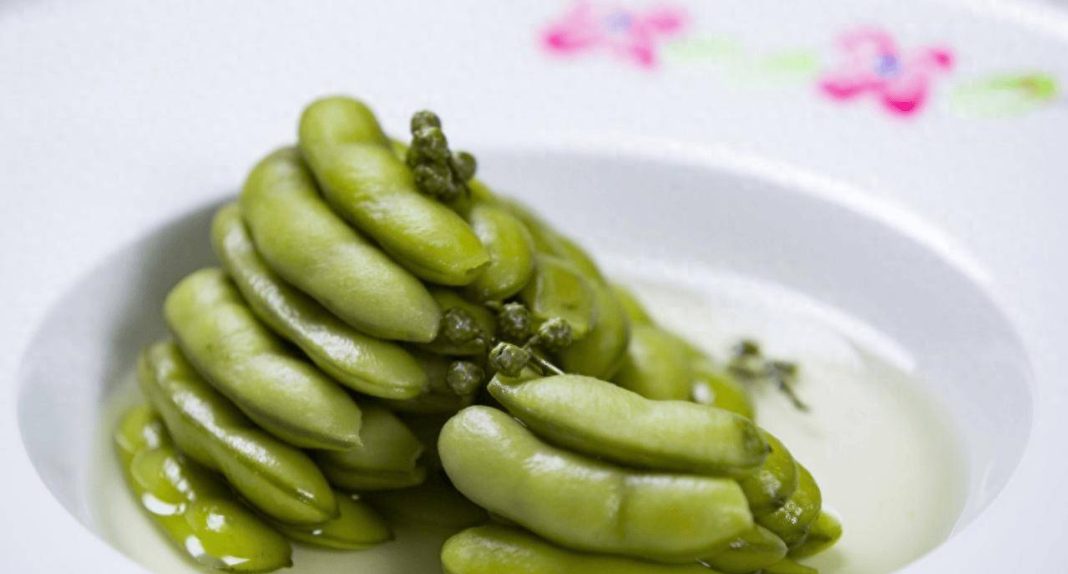In today’s society, with the improvement of living standards and changes in dietary habits, the issue of high cholesterol is increasingly becoming a hidden threat to public health. High blood lipids, especially high cholesterol, not only affect cardiovascular health but may also lead to a series of serious complications such as coronary heart disease, stroke, and so on. In response to such challenges, adhering to scientific and rational dietary control strategies becomes increasingly prominent and critical. However, among the numerous food choices, edamame, as a nutritionally rich vegetable, often raises doubts about its suitability for people with high cholesterol.
Edamame: Antidote or Poison for High Cholesterol?
Edamame, as the immature fruit of soybeans, is rich in protein, vitamins, minerals, and abundant dietary fiber. Although its fat content is higher than that of typical vegetables, it mainly consists of unsaturated fatty acids, such as linoleic acid and linolenic acid, which have a positive effect on improving fat metabolism, lowering triglyceride and cholesterol levels. Additionally, edamame is rich in soy isoflavones, a natural compound with antioxidant, anti-inflammatory, and cholesterol-lowering effects.
A comprehensive research report in the New England Journal of Medicine elaborates on the significant cholesterol-lowering effect of soy protein intake, demonstrating its positive health benefits. As a type of soybean, edamame provides the same benefits of plant-based protein. Multiple studies indicate that moderate daily consumption of edamame not only offers abundant nutrition but also helps reduce total cholesterol and low-density lipoprotein cholesterol (LDL-C, or “bad cholesterol”) levels, with no significant impact on high-density lipoprotein cholesterol (HDL-C, or “good cholesterol”) levels.
Despite the nutritional richness of edamame, doctors still advise patients with high cholesterol to consume it in moderation. Excessive intake of any food carries potential negative health effects that require caution. While the dietary fiber in edamame aids in lowering cholesterol, overconsumption may lead to indigestion, bloating, and other issues. Doctors recommend that individuals with high cholesterol limit their daily edamame consumption to around 50 grams to enjoy its health benefits while avoiding potential risks.
Individuals with high cholesterol must be cautious about three vegetarian dishes to avoid excessive intake!
1. Braised Eggplant: Invisible High-Fat Trap
Eggplant itself is a low-fat, low-calorie vegetable rich in various vitamins and minerals. However, braised eggplant, a popular dish, transforms into a potential “health hazard” due to its cooking method. Braised eggplant requires a large amount of oil for preparation, excessive fat intake can lead to increased cholesterol levels and burden the blood vessels. Individuals with high cholesterol should avoid this dish or seek lower-fat cooking methods to maintain health.
2. Stir-Fried Three Delicacies: Fried Delicacy, Healthy Burden
Stir-fried three delicacies is a common dish made by stir-frying eggplant, potatoes, and green peppers, widely loved by the public. However, this dish is often prepared using deep-frying techniques, leading to a sharp increase in fat content and calories, posing a challenge to a balanced diet. For individuals with high cholesterol, this cooking method is undoubtedly adding insult to injury. Therefore, doctors suggest that high cholesterol patients consume stir-fried three delicacies cautiously or opt for healthier cooking methods like steaming or boiling.
3. Dry-fried Green Beans: High-Fat Trap under a Refreshing Appearance
Dry-fried green beans may seem light and delicious but hide a crisis. Green beans, when deep-fried at high temperatures, absorb oil, significantly increasing the fat content of the dish, affecting health considerations. For patients needing cholesterol control, dry-fried green beans are undoubtedly a food that requires careful selection. If you enjoy the flavor of green beans, consider trying low-fat cooking methods such as cold tossing or stir-frying.
Health Risks and Prevention Methods
Health Risks
High cholesterol not only increases blood viscosity but also deposits plaques on blood vessel walls, gradually blocking blood vessels and increasing the risk of cardiovascular diseases such as coronary heart disease, stroke, etc. Additionally, high cholesterol may impact liver function and lead to issues like fatty liver.
Prevention Methods
Healthy Diet: Balancing the intake of various nutrients, reducing the consumption of high-fat, high-calorie foods. Moderately consume foods rich in dietary fiber and unsaturated fatty acids, such as edamame, oats, etc. Increase the intake of fresh vegetables and fruits to supplement vitamins and minerals.
Regular Exercise: moderate exercise can promote blood circulation, accelerate fat metabolism, and help lower cholesterol levels. It is recommended to engage in at least 150 minutes of moderate-intensity aerobic exercise per week, such as brisk walking, swimming, cycling, etc.
Regular Check-ups: Conduct regular lipid tests to promptly understand one’s cholesterol levels. Once abnormalities are detected, seek medical treatment promptly and follow the doctor’s advice for treatment.
Quit Smoking and Limit Alcohol: Smoking and excessive alcohol consumption increase the risk of cardiovascular diseases. Therefore, individuals with high cholesterol should quit smoking and limit alcohol intake to maintain a healthy lifestyle.
Facing the health challenge of high cholesterol, there is no need for excessive panic but also no room for complacency. Edamame, as a nutritionally rich vegetable, is a good choice for individuals with high cholesterol when consumed in moderation. However, vigilance is necessary regarding seemingly harmless yet potentially risky food traps such as braised eggplant, stir-fried three delicacies, and dry-fried green beans.
I am Dr. Yang, welcome everyone to like and follow, share your opinions in the comments section, let’s discuss together.


